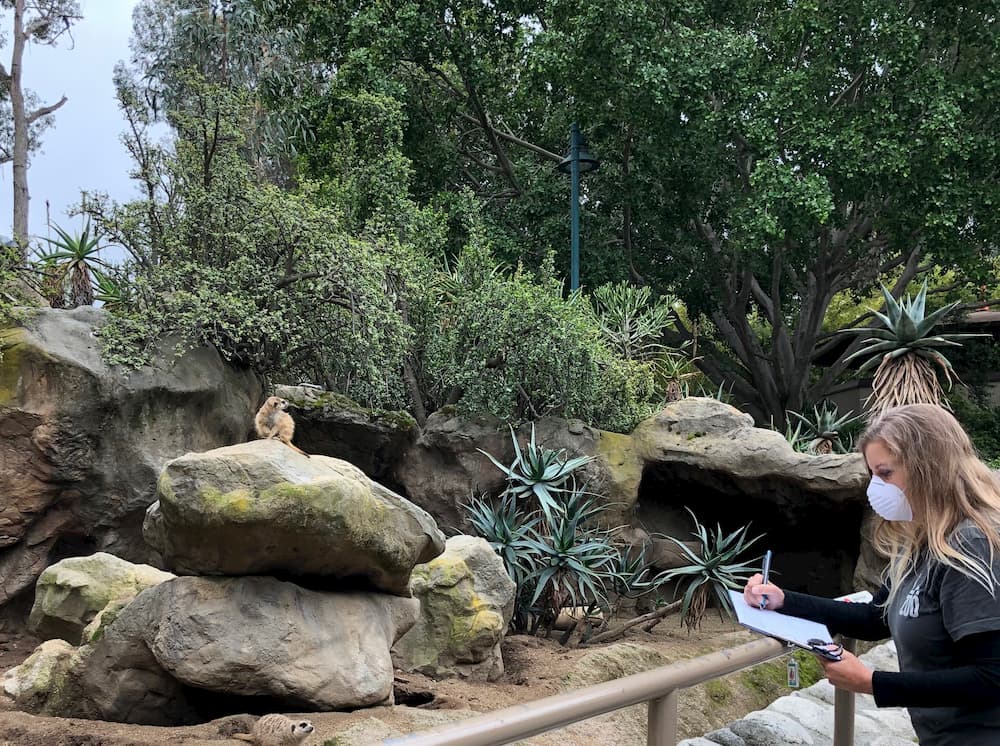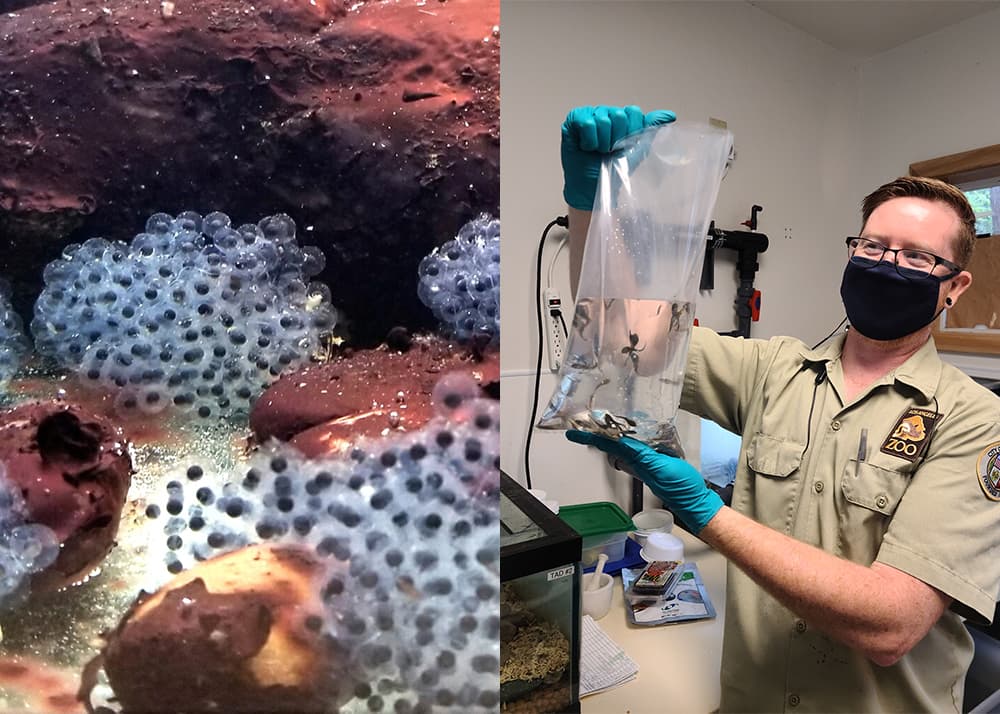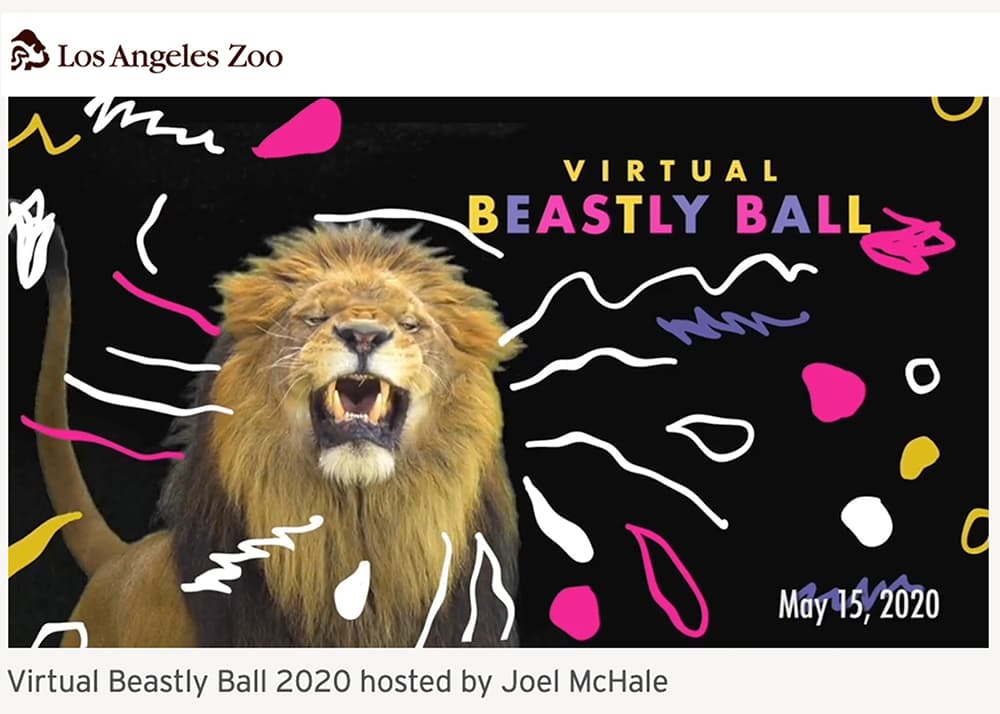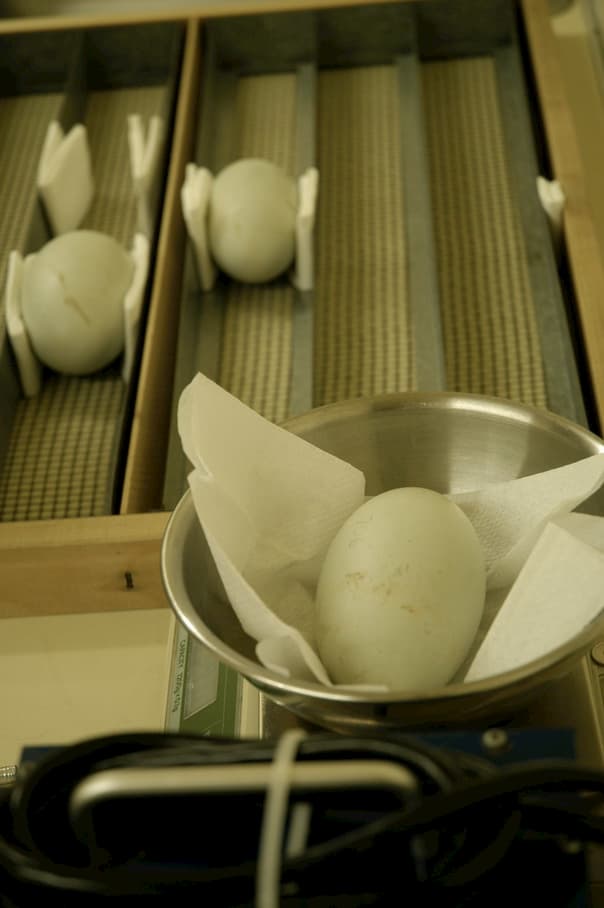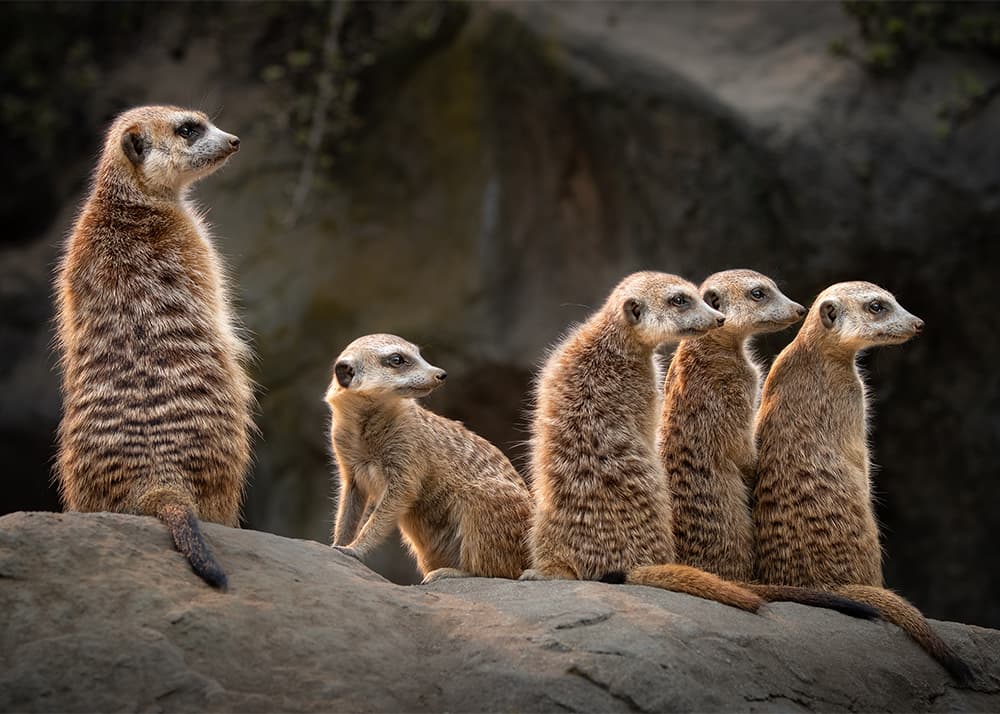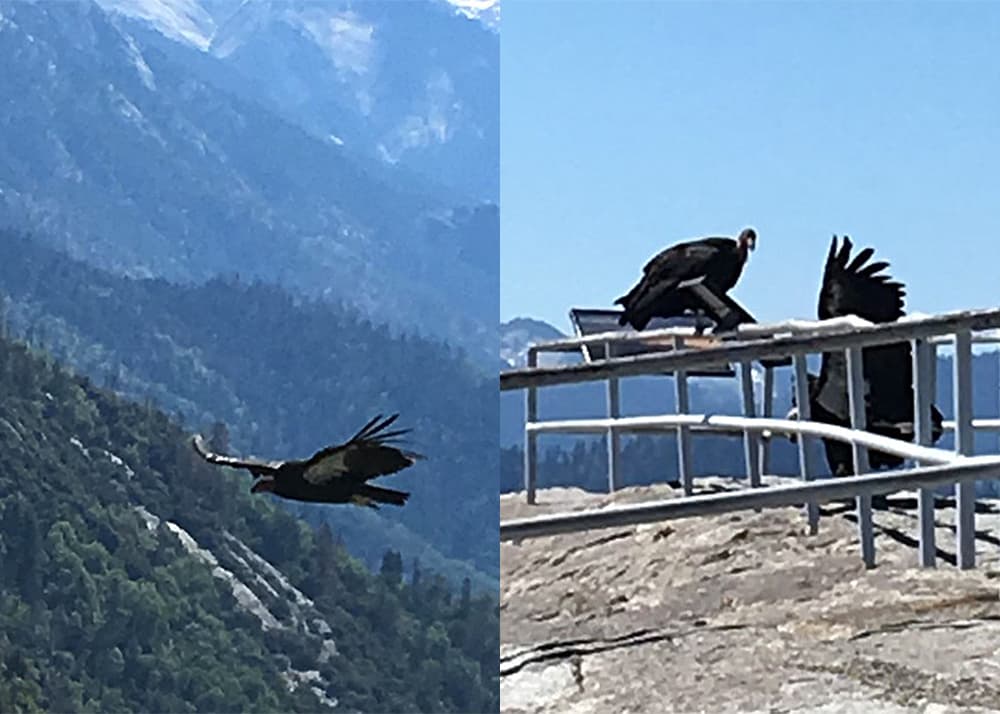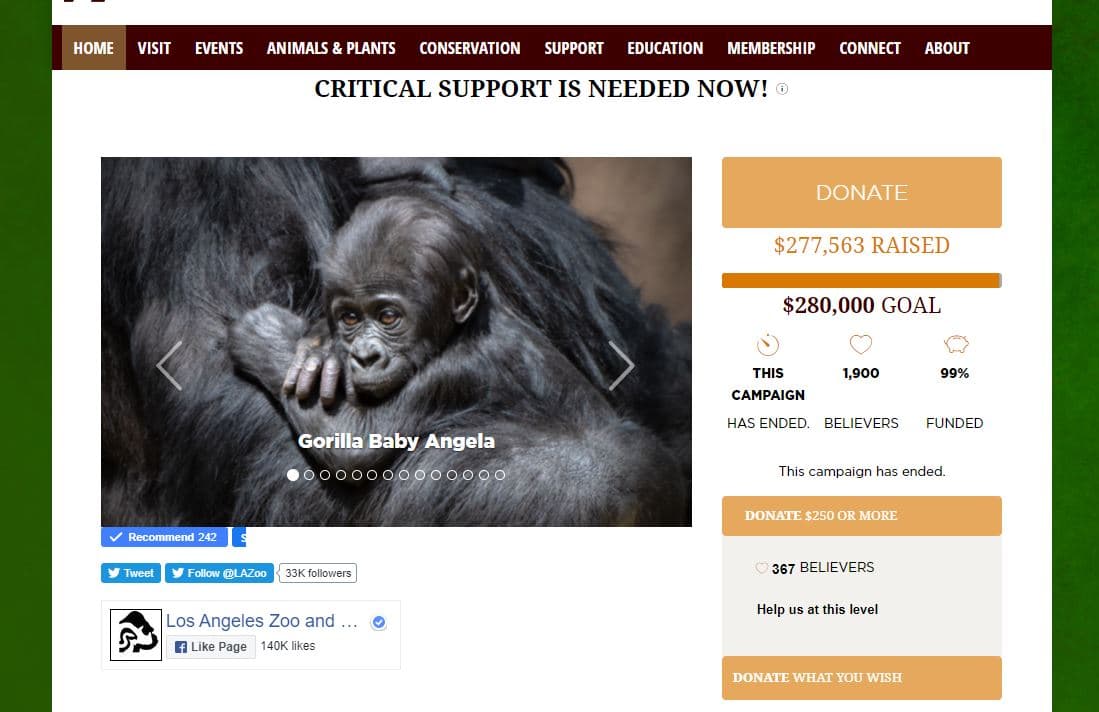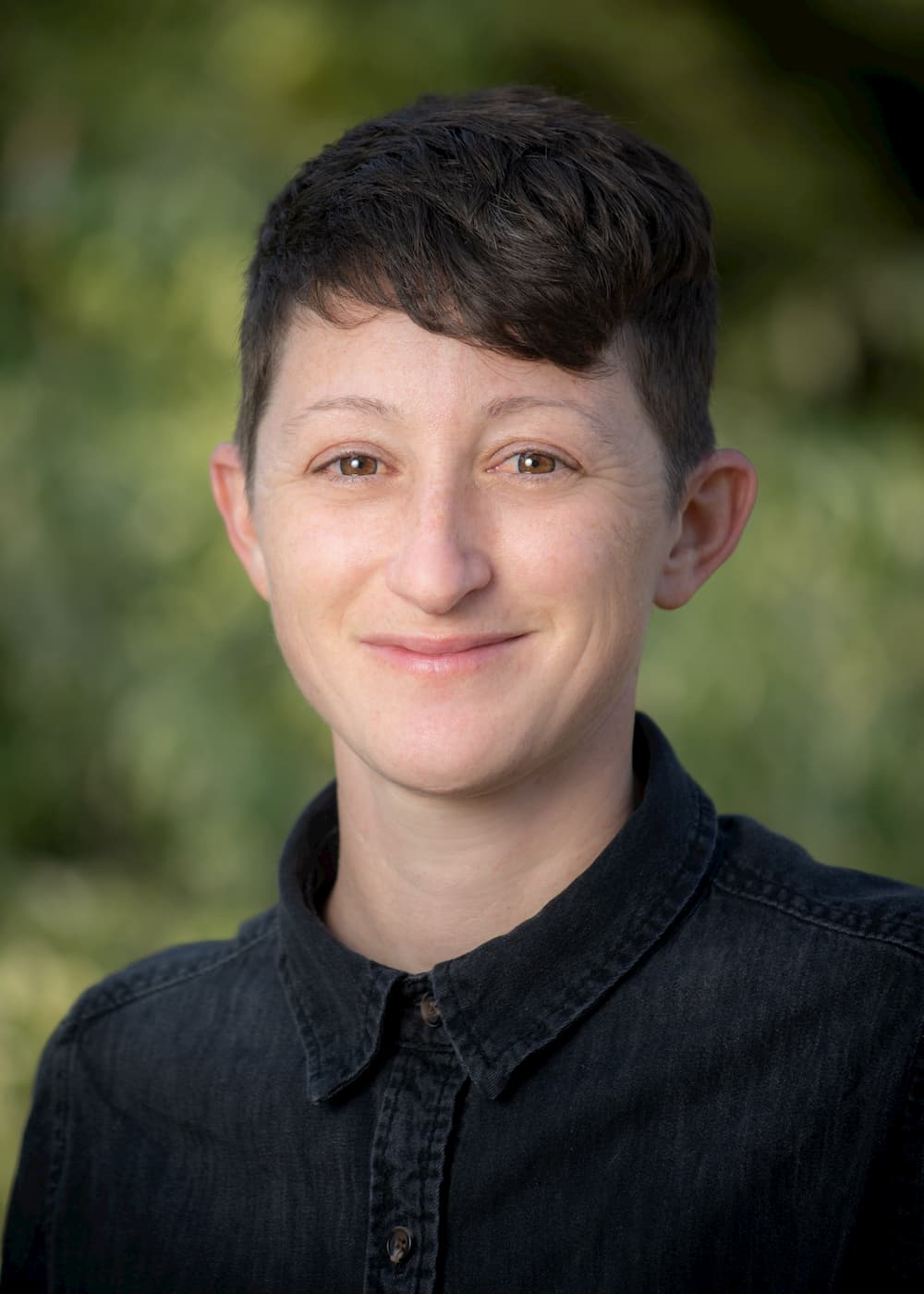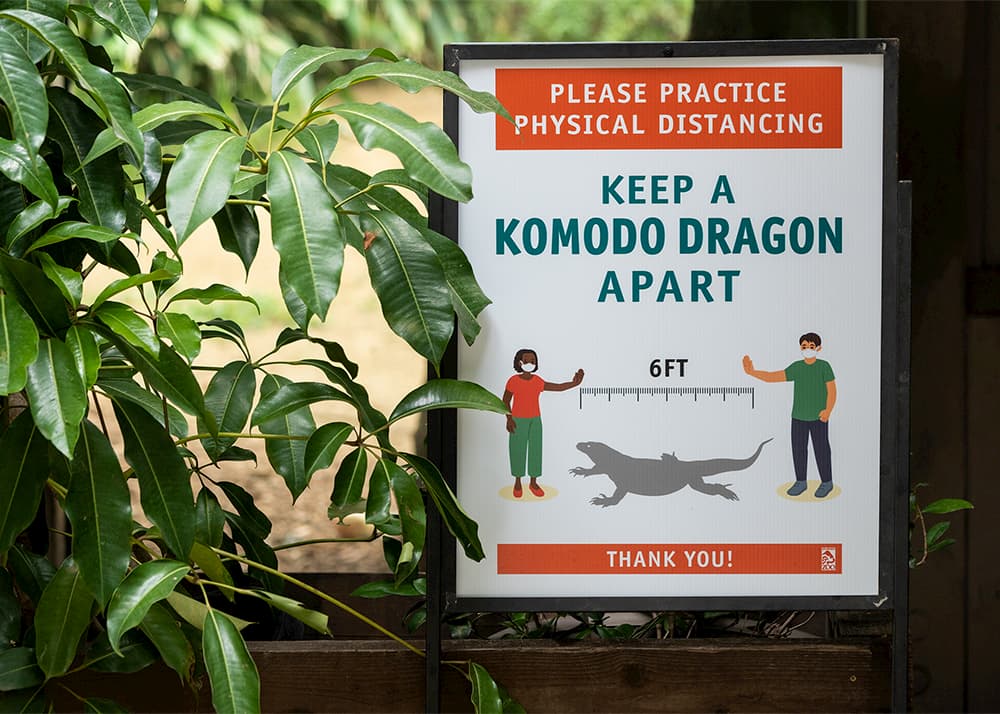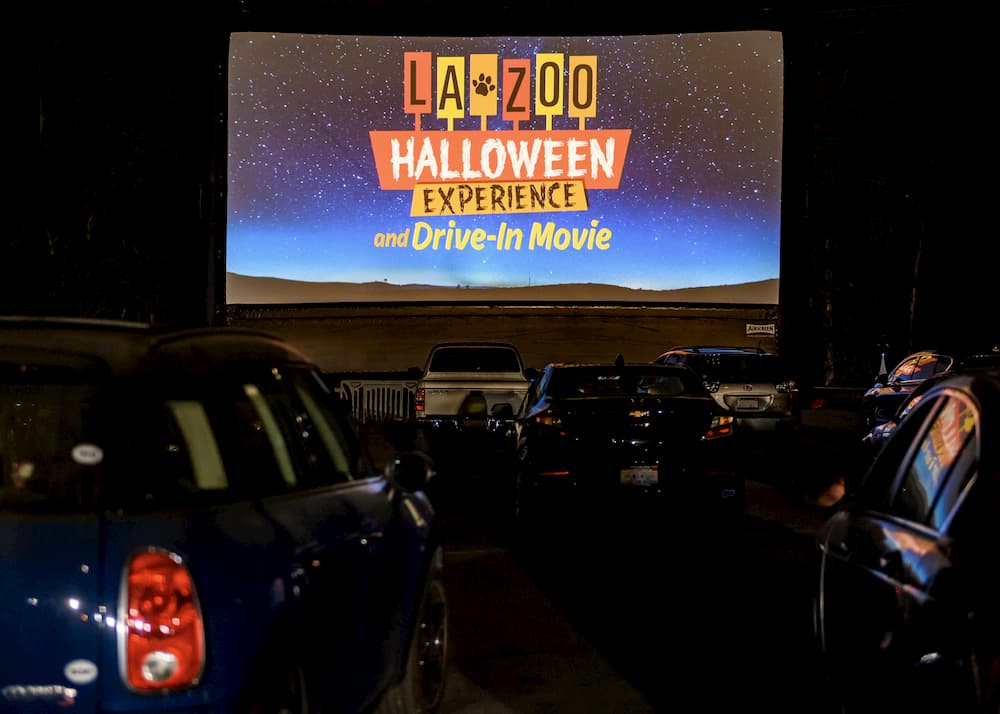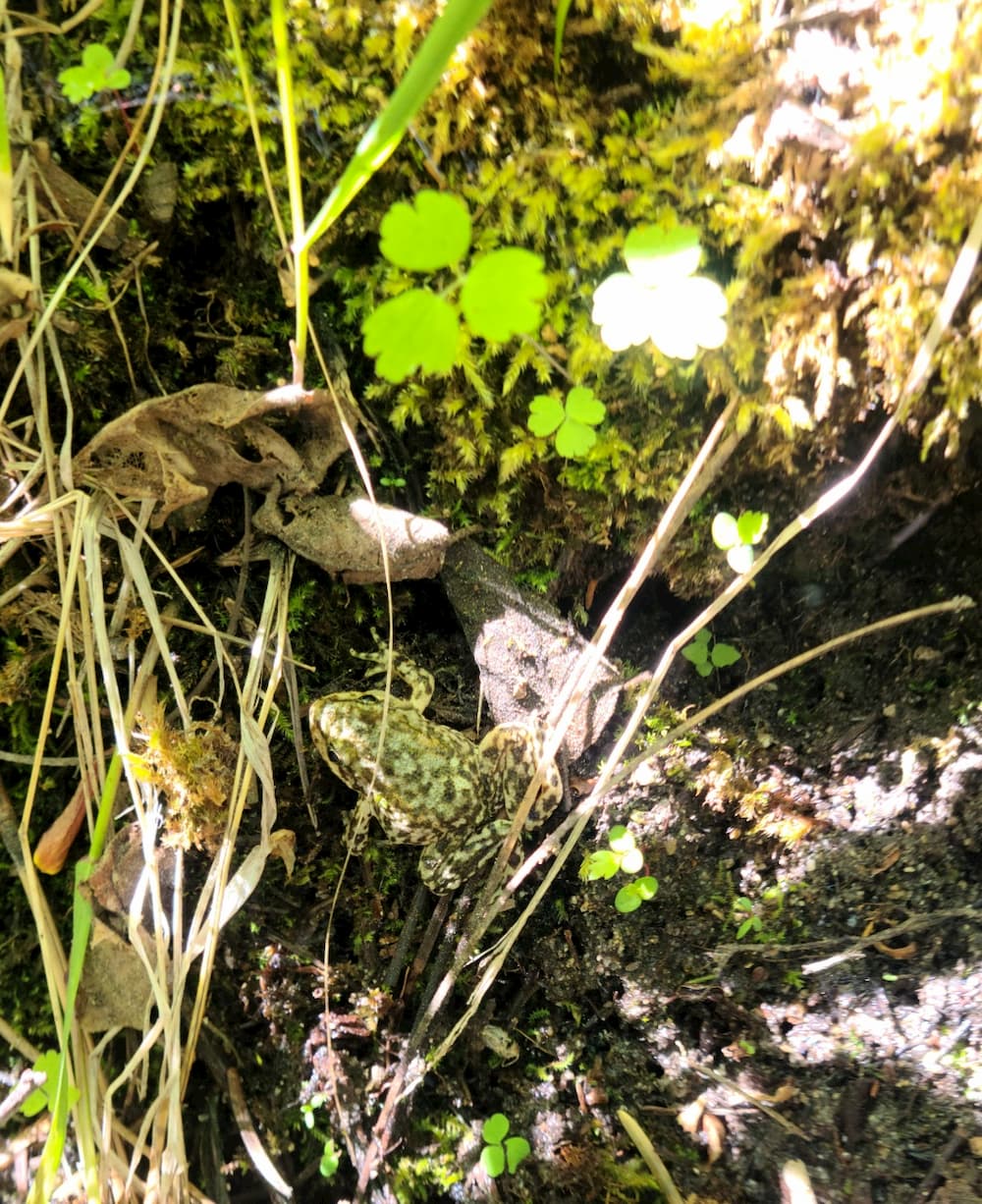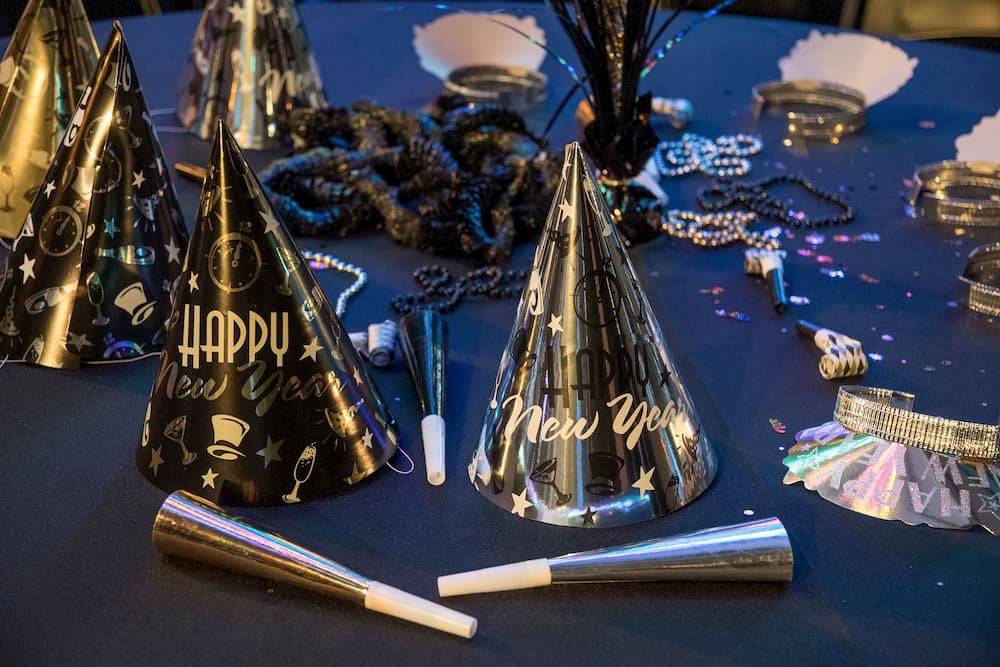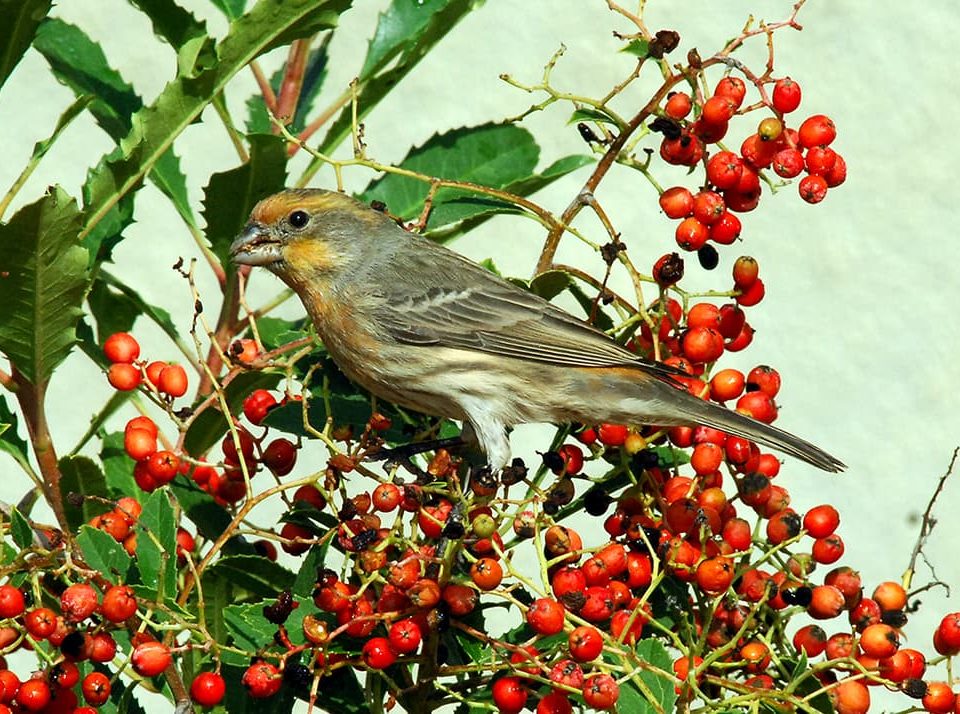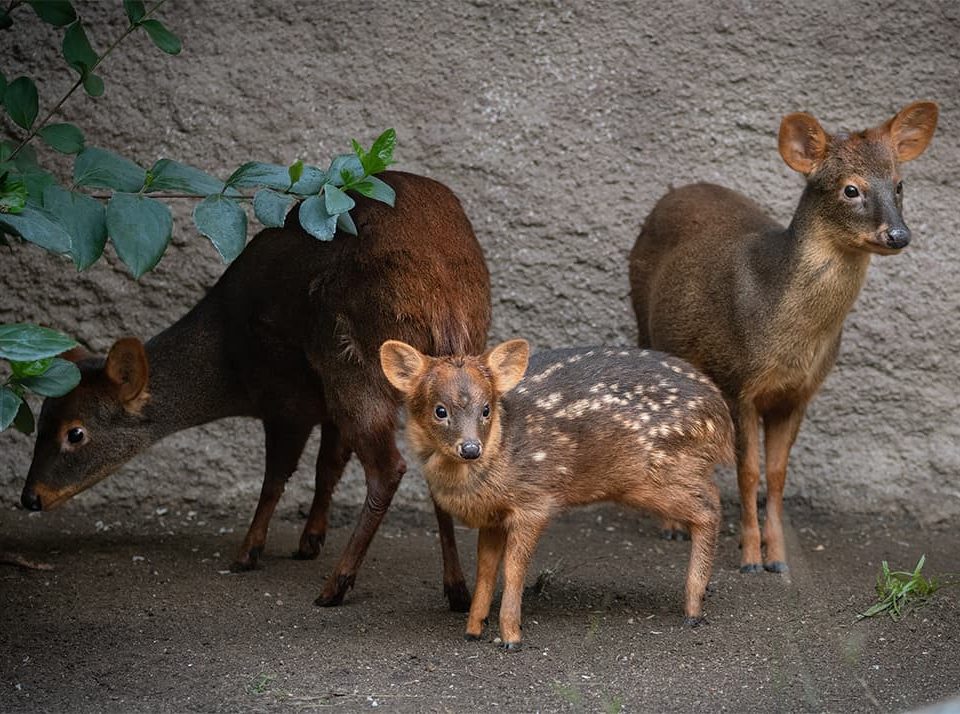The Year in Review: 2020’s Greatest Hits

New in the Zoo
December 15, 2020
Zoo Update with Denise Verret
December 15, 2020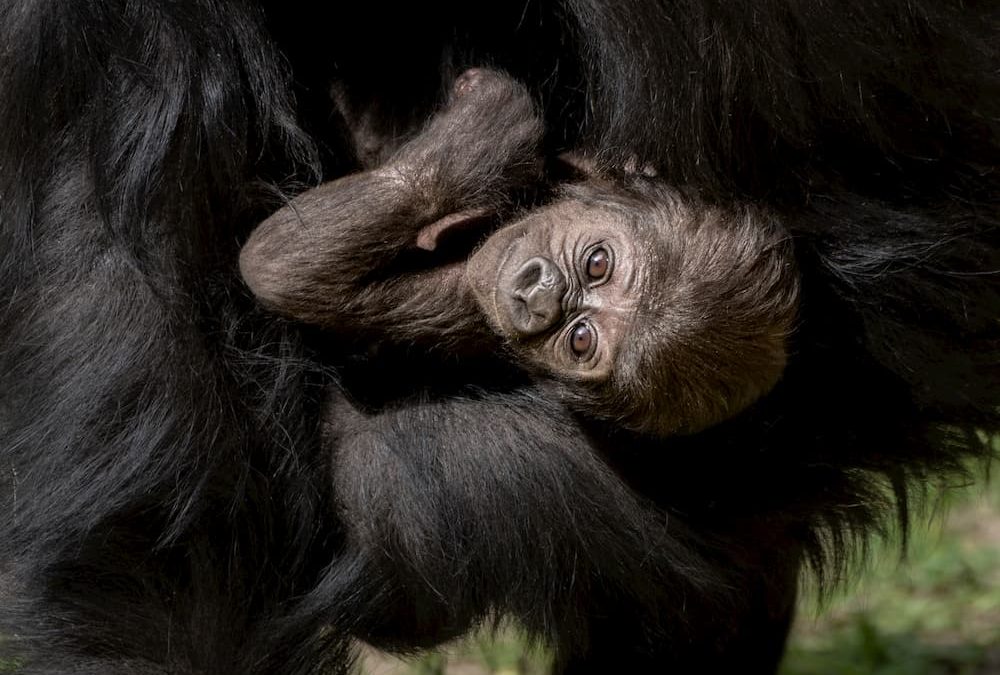
Angela's developmental milestones were bright spots for Zoo staff, volunteers, and guests throughout the year. Photo by Jamie Pham
Most everyone will agree that 2020 has been a year of challenges, from the COVID-19 pandemic to natural disasters, social unrest, and a contentious election. But there have been bright spots and many examples of people overcoming obstacles and reaching out helping hands to others. Many Zoo staff served as Disaster Service Workers to help fellow Angelenos. Others volunteered to go on grocery runs and make cloth face coverings for Zoo staff. Additionally, the Zoo was able to provide assistance and veterinary care for mountain yellow-legged frogs and California condors affected by this season’s wildfires. And there were landmark hatchings and births to celebrate. With your support, we truly remain greater than the sum of our parts.
January
Leaping into 2020
The L.A. Zoo’s herpetology staff had been working with a pair of fringe-limbed treefrogs (Criuziohyla craspedopus) behind the scenes for about two years, hoping for reproduction. Although this species is likely not endangered, little is known about its habits and natural history, and these amphibians are rarely seen either in their natural Amazon habitat or in zoos. A cluster of about 25 fertile eggs hatched during the second week in January and these offspring are now on view in the Rainforest of the Americas exhibit. This is another first-time reproduction for this species at the Los Angeles Zoo.
Special Delivery
On January 18, the Zoo announced the birth of a healthy baby to 25-year-old western lowland gorilla N’djia. The first-time mom delivered the female infant early that morning and they spent their first day together bonding behind the scenes. It was the first gorilla birth at the Zoo since 1996. In addition to winning over the rest of the gorilla family group—including her father, 32-year-old silverback Kelly, Rapunzel, 35, and Evelyn, 43—she also stole the heart of long-time donor Basil Collier, who named the baby after his daughter Angela. “The name is perfect considering this girl was born here in Los Angeles, which naturally makes her a proud Angeleno,” commented Director of Animal Programs Beth Schaefer. “We can already see how the community is connecting with this baby, which is shining a light on this critically endangered species and what we can do to save it.”
March
Adapting to Change
In response to the COVID-19 pandemic, the Zoo closed to the public on March 19. It was the beginning of the longest closure in the 54-year history of the facility. Essential staff (Animal Care, Construction, Grounds Maintenance, Construction, and Administration) continued to report to work on campus while remaining staff adapted to telecommuting. "Life is unpredictable," commented Zoo Director and CEO Denise Verret. "The COVID-19 pandemic has upended life as we knew it... I am grateful for all of the staff who are coming to work every day to help us carry out the essential tasks, for the GLAZA staff continuing to support the Zoo and its mission through their telecommuting efforts, and the docents and volunteers who I know are eagerly awaiting to return and continue to give of themselves in all of the ways that allow the Zoo to be successful. Let’s stay healthy, remain strong, and be resilient."
Los Angeles Times reporter Carla Hall interviewed Zoo Director/CEO Denise Verret for an editorial discussing the state of the L.A. Zoo since its closure on March 13. The story highlights some of the Zoo’s thriving conservation programs for species such as California condors and southern mountain yellow-legged frogs. Click here to read the L.A. Times Article.
May
Egg-ceptional Year for MYLFs!
By May, the Zoo’s two groups of mountain yellow-legged frogs (MYLFs) had produced more than 4,000 eggs in 32 egg masses. It was a landmark breeding season for this Critically Endangered species. Two releases of tadpoles and froglets into protected wilderness areas took place in July and August. The third release, originally scheduled for September, was put on hold due to the Bobcat Fire which devastated release sites in the San Gabriel Mountains, and the Zoo instead participated in a rescue plan to save some of the frogs and tadpoles that survived the burn.
Virtual Venture, Actual Success
First-ever virtual Beastly Ball took place on May 15 and was a roaring success! Hosted by actor/comedian Joel McHale and featuring special appearances by celebrities including Slash, James Corden, Lisa Ling, Carolyn Hennessy, and more, the unprecedented online event raised over one million dollars in support of the Zoo and drew in more than 21,000 viewers from around the globe. GLAZA President Tom Jacobson commented, “We made the decision to take the Ball online and hoped to generate $800,000 in revenues, but the result was beyond our wildest dreams with more than $1,000,000 in gifts and bids. I’m grateful for everyone’s incredible creativity and our donors’ outstanding generosity. The success of this event gives us a terrific new fundraising and communication tool for the future.”
Soaring Success
By the close of the 2020 California condor breeding season, the Zoo's breeding group had produced 18 eggs, surpassing the 1996 record of 17 eggs in a single season. In addition, two of the three new breeding pairs produced eggs, with the third showing potential for next year, and each of the established pairs laid at least one egg. Staff are confident that this success will continue in the years ahead.
Precious Pups
Four meerkat pups were born on May 30, bringing the mob total to eight. Conceived during the Zoo’s closure, they spent the first two weeks of their lives tucked safely inside an underground burrow with their mother while they nursed. Images of the youngsters starting to explore their habitat were a social media hit. The arrival of the adult meerkats in this mob in 2018 was based on a recommendation from the Species Survival Plan.
Welcome Back, Condor
In May, at least six condors were spotted in Sequoia National Park, marking the first time in decades that the species has been documented within its borders. Two of the birds sighted were hatched at the L.A. Zoo and released into the wild at Bitter Creek National Wildlife Refuge in 2016 (male #784) and 2018 (female #866). Additionally, #866 is one of the “Anyapa twins” hatched in 2017, which were the first “double-brooded” chicks (single adult pair caring for two chicks simultaneously) in the CCRP.
On October 29, Forbes Travel posted a feature encompassing the successful conservation efforts of the Los Angeles Zoo, notably the success of the California Condor Recovery Program. “Without zoos, this species would absolutely be extinct,” commented Dr. Jake Owens, director of conservation, in the story. “We have the capacity, the knowledge, the experience, and the infrastructure to care for and breed these animals that otherwise wouldn’t be able to survive. We play a really critical role, and it’s something that people don’t always understand, especially since so much of it goes on behind where visitors can see.” The article notes how zoos "play an immensely vital role in preserving the dwindling level of biodiversity that still remains on the earth." Click here to read the article in full.
July
Appealing Effort
With the Zoo closed to the public, GLAZA staff worked tirelessly to promote and financially support the Zoo’s mission of conservation, and the Zoo’s animal care team tended to some of the world’s most threatened creatures. At the beginning the 166-day closure, GLAZA issued an urgent appeal to raise $65,000 in emergency support during these difficult times. Immediately, nearly 2,000 donors responded to our campaign with both generous contributions and meaningful words of encouragement. By July, more than $275,000 was raised for the emergency fund, making this the most successful fundraising campaign in the 57-year history of GLAZA. “We were truly blown away by this incredible outpouring of generosity during the Zoo’s closure,” commented Danika Jensen, manager of annual giving programs. “The heartfelt notes submitted by our donors served as sources of inspiration for both Zoo and GLAZA staff during an incredibly challenging time.”
Conservation Connections
In July, Curator of Education Anna Becker transitioned to become the new coordinator of community conservation, working in the Conservation division under the leadership of Dr. Jake Owens. Anna’s responsibilities will include coordinating local community conservation programs, developing collaborative partnerships with local organizations, and supporting a coordinated Zoo-wide conservation culture initiative. "Working to expand our Zoo’s conservation programs, my job is to build a culture of conservation that empowers communities, amplifies the work of partners, and improves the lives of people and wildlife," Becker commented. "Building a culture of conservation that belongs to everyone is vital to understand the fuller picture, diversify ideas, and for the Los Angeles Zoo to be a trusted conservation leader to all. Conservation belongs to everyone and we all deserve a place in it."
On August 26, KCRW's Greater L.A. podcast aired a story on wildlife trafficking, its role in the current pandemic, and how the L.A. Zoo is caring for trafficked animals. The story featured L.A. Zoo Director of Conservation Dr. Jake Owens as well as Curator of Birds Mike Maxcy and included remarks on the importance of the reopening of the L.A. Zoo. Revenue generated from the reopening can impact the funding of programs that help fight trafficking and pandemics. Click here to read the whole story and hear the interviews.
Access for All
In July, Manager of Community Partnerships and Inclusion Jess Niven-Kohring became director of equity programs. In this new role, Niven-Kohring is responsible for developing and overseeing the Zoo’s comprehensive equity plan addressing internal and external programs. "The hallmark of an enduring institution like the Los Angeles Zoo is that we celebrate what we do well and endeavor to assess and change the things we don't," Niven-Kohring observed. "This is what it means to evolve. We seek to honor our achievements by moving forward on a solid foundation of justice, equity, inclusion, accessibility, and diversity for our staff, volunteers, partners, and guests."
August
A Feathered First
A sarus crane chick hatched on August 9—a first for this species at the L.A. Zoo and a success for the Species Survival Plan. The female chick is being raised by her parents in their habitat located near the China section of the Elephants of Asia exhibit. The Zoo received its first sarus crane in 1979, and since then has housed several individuals before the current breeding pair. Sarus cranes are the world’s tallest flying birds and feed on aquatic plants, invertebrates, small vertebrates, and grains. Habitat loss and degradation, including the conversion of wetlands for farming and human development, are major threats, as are collisions with human structures.
Back in Action!
After closing its gates on March 13 due to the COVID-19 pandemic, the Zoo reopened to the general public and its members on August 26. During the closure, the Zoo developed a safe, modified reopening experience for its guests that conforms with the Los Angeles County Department of Public Health’s safety protocols. It includes limited capacity, timed-ticketed entry, closure of indoor and high-touch spaces, requirement of face coverings, and supplemental signage throughout the Zoo. “The world has changed over the last several months," commented Zoo Director and CEO Denise Verret, "and so has your Los Angeles Zoo. You will notice enhanced protocols and procedures onsite to ensure the health and safety of all guests, staff, and animals. We are thrilled to be able to yet again provide our community with an outdoor, enriching experience that connects people with nature and the animals in our care. Welcome back to the L.A. Zoo!”
On August 20, Los Angeles Magazine featured an in-depth look into the L.A. Zoo. Told through the lens of the COVID-19 pandemic, writer Robert Ito interviewed several staff about what it takes to operate a Zoo through an unprecedented crisis. Topics discussed in detail ranged from wildlife conservation to animal health and welfare, and diversity and inclusion. Click here to read the full story.
September
Happy Herd
A male Masai giraffe was born on September 26 to parents Zainabu and Phillip—the 38th at the L.A. Zoo. Like all giraffes, this calf was born with horn-like ossicones, which lay flat on the head during birth and pop up around one week later. "This calf has been very inquisitive about the new world around him," says Animal Keeper Mike Bona. "It's fun watching him explore and build relationships with the other herd members." Giraffes populations across Africa are estimated to number just over 100,000 individuals. Populations of all four giraffe species combined have declined by 40 percent over the past 30 years, and Masai giraffe populations have declined by 50 percent within that same time period. Masai giraffes were classified as Endangered by the IUCN in 2019, which makes every birth important to preserving this iconic animal from extinction.
October
Pass the Popcorn
L.A. Zoo Drive-In Movie Nights debuted just in time for the Halloween season. For three weekends in October, guests were able to bring their social bubbles to the Zoo parking lot for a magical night of safe, cinematic, and physically distanced fun. The Animal Adventures weekend featured Dr. Doolittle (1998), Zootopia (2016), and Rise of the Planet of the Apes (2011). The Brilliant Betty White weekend included The Proposal (2009), The Lorax (2012), and Lake Placid (1999). For Halloween weekend, the spooky, suspenseful selections were Clue (1985), Goosebumps (2015), The Addams Family (2019), and Poltergeist (1982). The series was a huge hit with Angelenos. The event sold out several nights throughout its run with more than 2,600 carloads of guests attending the series. "While onsite, in-person events are on hold at the Zoo, GLAZA’s Special Events division was delighted to produce a series of drive-in movie nights in October," comments Vice President of Operations and Events Sara Rodriguez. "We were committed to offering a safe night out for our community, especially our GLAZA members, and took every precaution to ensure a festive and entertaining event. The series culminated with a Halloween-themed nights which included a spooky drive-through the parking lot with photo-ops from your car."
Frog Rescue
The Bobcat Fire burned more than 115,000 acres, including fragile mountain yellow-legged frog (MYLF) habitat in the San Gabriel Mountains. The fire caused the cancellation of the final scheduled release of Zoo-bred froglets and tadpoles into that area, but on October 22, U.S. Geological Survey (USGS) biologists released 134 tadpoles of varying stages and 54 froglets, all produced at the Zoo, into Vincent Gulch Canyon, which did not burn during the fire. The Zoo in turn received about 50 tadpoles that were rescued from Bobcat Fire burn areas. They will be introduced into the Zoo's breeding program to help diversify its gene pool. They will also boost the insurance colony which could help restore a wild population in the burn zone where debris flows during the rainy season could potentially wipe out the frogs and tadpoles that remain in habitat.






